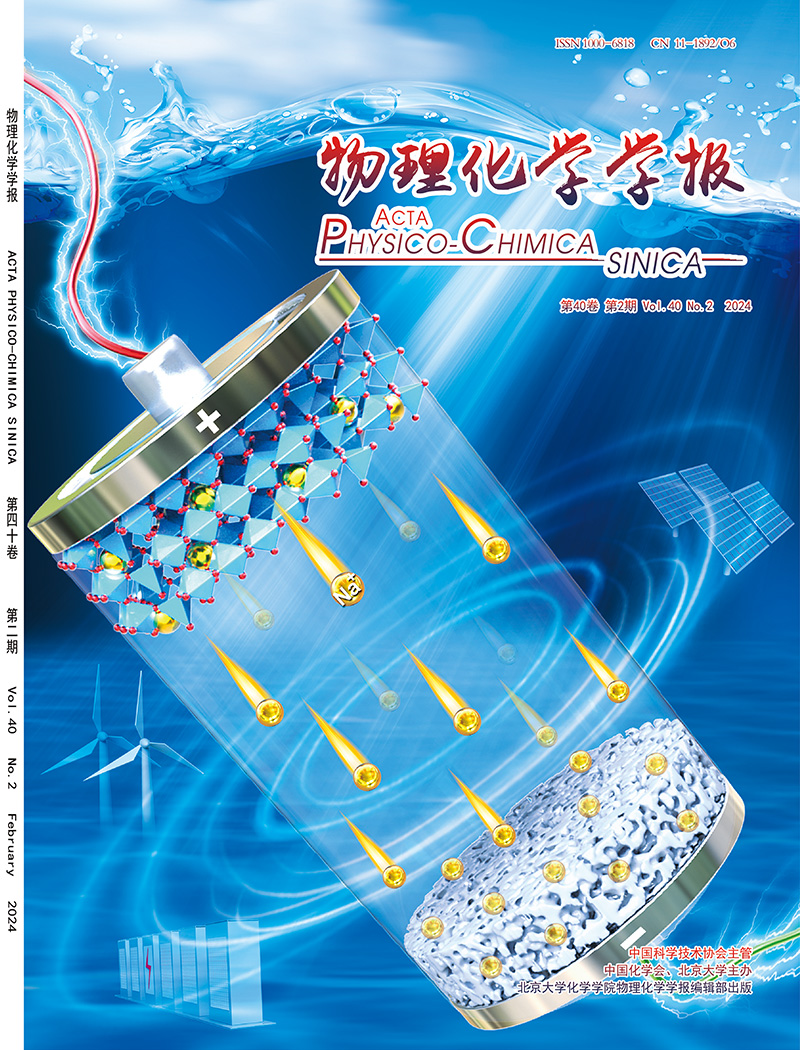表面硫化物对钯硫纳米片加氢性能的影响
IF 10.8
2区 化学
Q1 CHEMISTRY, PHYSICAL
引用次数: 0
摘要
烯烃作为有机合成的基础原料,在聚烯烃和合成橡胶的生产中起着至关重要的作用。烷烃制烯烃的转化在聚合物和精细化工工业中都是至关重要的。然而,这一过程在平衡选择性和活性方面面临重大挑战。氢固有的低溶解度,加上与炔烃相比,中间烯烃的氢化热力学容易,导致烯烃的选择性下降,因为进一步的氢化会生成烷烃。钯基催化剂是广泛应用于加氢的催化剂,具有较强的氢吸附性,但缺乏选择性。研究人员通常通过引入其他金属或非金属来修饰催化剂结构,以产生金属间化合物,旨在提高烯烃的选择性。本研究以不同硫源合成钯硫纳米片(Pd-S NSs)为研究对象,探讨表面S组分对选择性加氢炔烃催化效率的影响。其中,以1,4-苯二硫醇(PT)为硫源的Pd-S-PT NSs/C在苯乙炔加氢2 h后表现出较高的苯乙烯选择性(92.3% ~ 96.7%),对不同炔的端基表现出显著的选择性。相比之下,以硫脲(TU)为硫源的Pd-S-TU NSs/C的烯烃选择性较差(72.4%)。x射线光电子能谱(XPS)表明,Pd-S- pt NSs/C中烯烃选择性的提高是由于阻碍了Pd向S的电子转移,以及表面存在的S态,保持了较高的加氢活性,同时避免了氧化S态(S4+)引起的过加氢反应。原位漫反射傅里叶变换红外光谱(DRIFTS)表明,Pd-S-PT NSs对苯乙烯的吸附较弱,抑制了进一步加氢生成乙苯的过程。随着解吸温度的升高,Pd-S-PT NSs对苯乙烯的吸附强度降低,表明其对烯烃的选择性较高。相反,Pd-S-TU NSs对苯乙烯的吸附更强,有利于进一步加氢生成乙苯,这表明额外的S4+物质的存在阻碍了苯乙烯选择性的提高。本研究不仅介绍了烯烃加氢的高效催化剂,而且推进了精确控制催化过程的基础研究,特别是对催化表面的精细控制。下载:下载高分辨率图片(150KB)下载:下载全尺寸图片本文章由计算机程序翻译,如有差异,请以英文原文为准。
Surface Sulfur Species Influence Hydrogenation Performance of Palladium-Sulfur Nanosheets
Olefins play a crucial role as fundamental raw materials in organic synthesis, particularly in the production of polyolefins and synthetic rubber. The conversion of alkynes to olefins is pivotal in both the polymer and fine chemical industries. However, this process faces significant challenges in terms of equilibrium selectivity and activity. The inherent low solubility of hydrogen, coupled with the thermodynamic ease of hydrogenating intermediate olefins compared to alkynes, contributes to a decline in olefin selectivity due to further hydrogenation leading to alkanes. Palladium-based catalysts, widely used for hydrogenation, exhibit robust hydrogen adsorption but lack selectivity. Researchers commonly modify catalyst structures by introducing other metals or nonmetals to create intermetallic compounds, aiming to enhance olefin selectivity. This study focuses on synthesizing palladium-sulfur nanosheets (Pd-S NSs) using various sulfur sources to explore the impact of surface S species on the catalytic efficiency of selectively hydrogenating alkynes. Among these, Pd-S-PT NSs/C, utilizing 1,4-benzenedithiol (PT) as the sulfur source, demonstrated high styrene selectivity (92.3%–96.7%) following phenylacetylene hydrogenation for 2 h, showing notable selectivity for different alkynes’ end-groups. Contrastingly, Pd-S-TU NSs/C, with thiourea (TU) as the sulfur source, exhibited poor olefin selectivity (72.4%). X-ray photoelectron spectroscopy (XPS) revealed that the improved olefin selectivity in Pd-S-PT NSs/C was attributed to hindered electron transfer from Pd to S, as well as the presence of surface S0 species, maintaining high hydrogenation activity while avoiding over-hydrogenation induced by oxidized S species (S4+). In situ diffuse reflectance Fourier transform infrared spectroscopy (DRIFTS) demonstrated weak styrene adsorption on Pd-S-PT NSs, inhibiting further hydrogenation to ethylbenzene. The ease of styrene desorption on Pd-S-PT NSs, indicated by reduced adsorption strength with increasing desorption temperature, highlighted high olefin selectivity. Conversely, stronger styrene adsorption on Pd-S-TU NSs facilitated additional hydrogenation to produce ethylbenzene, suggesting that the presence of additional S4+ species hindered improved styrene selectivity. This study not only introduces efficient catalysts for olefin hydrogenation but also advances fundamental research on precisely controlling catalytic processes, particularly focusing on the nuanced control of catalytic surfaces.
- Download: Download high-res image (150KB)
- Download: Download full-size image
求助全文
通过发布文献求助,成功后即可免费获取论文全文。
去求助

 求助内容:
求助内容: 应助结果提醒方式:
应助结果提醒方式:


